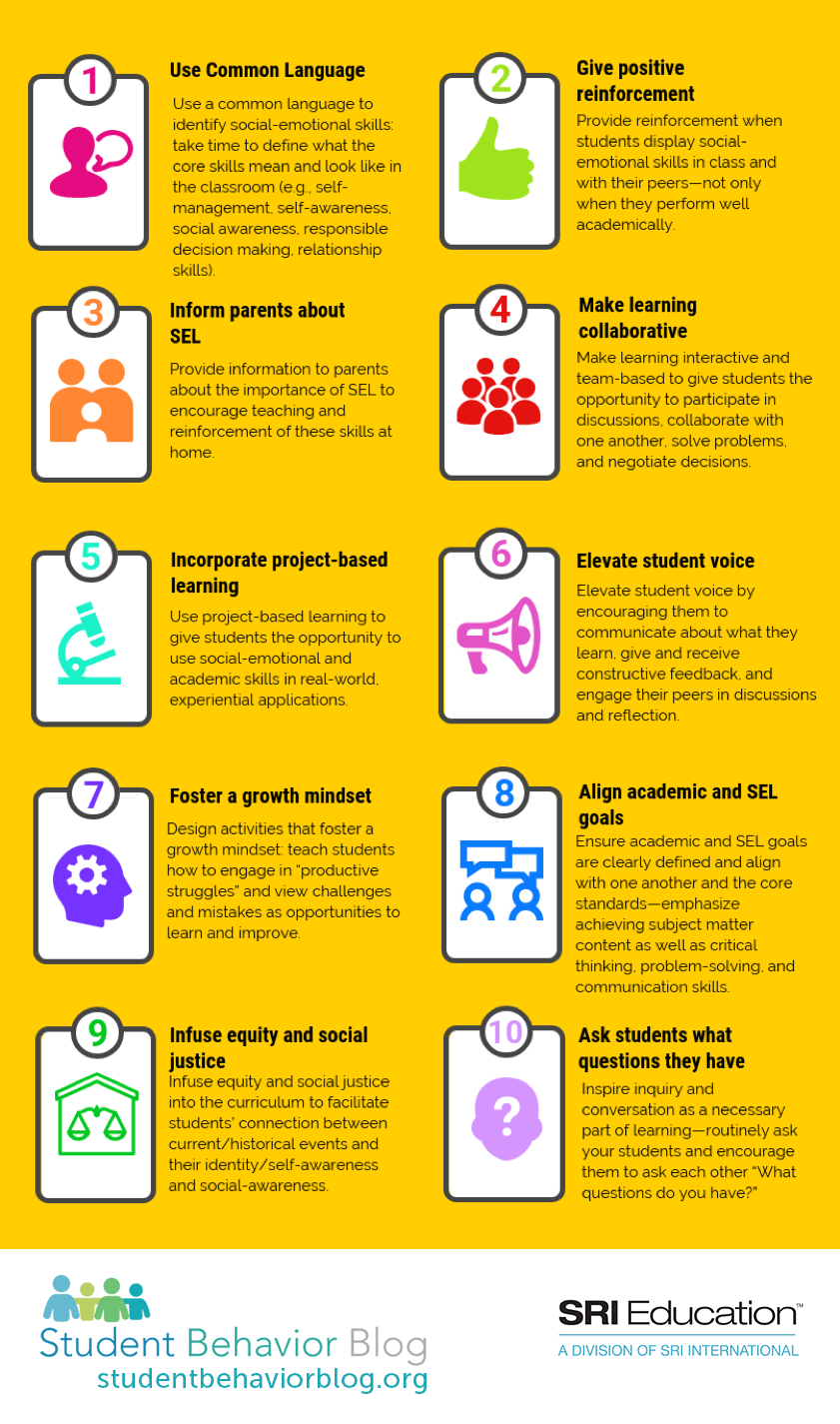In an earlier post, Helping students help themselves, we discussed the behavioral and academic benefits of students developing social-emotional skills and the importance of teachers incorporating social-emotional learning (SEL) into daily classroom routines. Although most teachers recognize the importance of teaching social-emotional skills, many are also concerned about having time to fulfill their other responsibilities. How do you incorporate social-emotional skills development into an already busy day filled with standards-based academics?
Integrating SEL
One approach to teaching social-emotional skills in the classroom is to integrate SEL into everyday academic instruction. Rather than teach social-emotional skills independently of academic skills, many teachers and administrators are trying to implement SEL throughout the school day. The Collaborative for Academic, Social, and Emotional Learning (CASEL) and the Aspen Institute’s National Commission on Social, Emotional, and Academic Development (SEAD) offer some great information on how to do this:
- CASEL has partnered with school districts across the country through the Collaborating Districts Initiative (CDI) to incorporate SEL into all aspects of the education process. The Integrating with Academics CASEL resource provides great examples of how three districts across the country (in California, Illinois, and Tennessee) are breaking new ground in this area.
- CASEL also collaborates with states through the Collaborating States Initiative (CSI) to promote SEL across entire state education systems. Through this collaboration, various resources and tools for integrating and aligning SEL with academics and instruction are available.
- SEAD has produced timely and helpful briefs focused on SEL into academics. Putting It All Together illustrates how implementing an integrative SEL approach is different than delivering stand-alone SEL programs, details the benefits and challenges of this approach, and provides concrete strategies and resources to do this work well.
Here are several useful strategies identified in these resources that teachers can use to incorporate SEL into everyday academic instruction:

Need ideas for academic activities that incorporate these SEL strategies?
Check out Appendix A of the Guidelines on Implementing Social and Emotional Learning (SEL) Curricula K-12 created by the Massachusetts Department of Elementary and Secondary Education. This resource provides a list of classroom activities specific to ELA, math, and history that align with the SEL competencies of self-awareness, self-management, social awareness, relationship skills, and responsible decision making.
While incorporating SEL into the classroom requires purposeful planning, developing the social-emotional skills of students is well worth the investment. We believe the resources highlighted in this post can increase the efficiency and simplicity of the process, so do take advantage of them! Also, be on the lookout for our upcoming post which will highlight another approach to teaching social-emotional skills in the classroom: Implementing a stand-alone SEL program!
More on SEL
- Learn the basics of what SEL is, specific skills students develop when SEL is taught, and how a classroom can be impacted by SEL by reviewing our previous blog post, Helping students help themselves.
- Keep up with all of our posts on SEL by bookmarking our SEL Tag.
Topics: Classroom-based intervention Social-emotional learning
Tags: Classroom Climate Classroom Management Implementation Prevention Resilience SEL Self-regulation Social problem-solving Social-emotional skills
